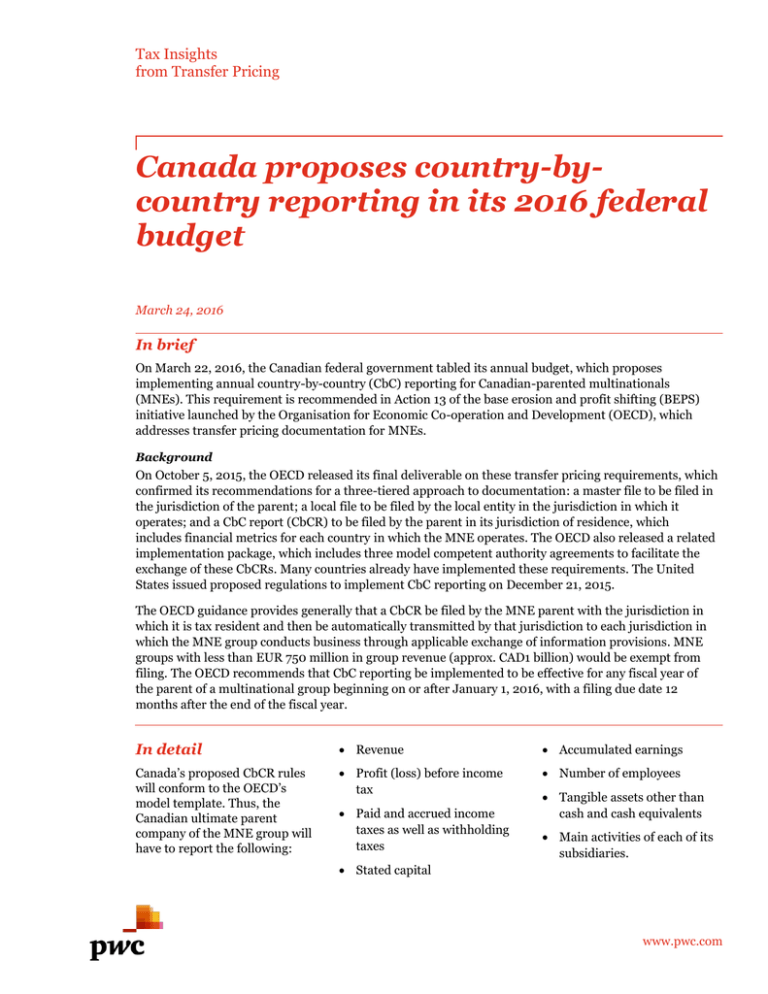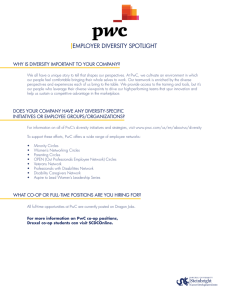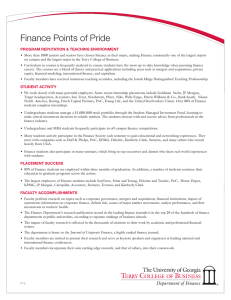Canada proposes country-by- country reporting in its 2016
advertisement

Tax Insights from Transfer Pricing Canada proposes country-bycountry reporting in its 2016 federal budget March 24, 2016 In brief On March 22, 2016, the Canadian federal government tabled its annual budget, which proposes implementing annual country-by-country (CbC) reporting for Canadian-parented multinationals (MNEs). This requirement is recommended in Action 13 of the base erosion and profit shifting (BEPS) initiative launched by the Organisation for Economic Co-operation and Development (OECD), which addresses transfer pricing documentation for MNEs. Background On October 5, 2015, the OECD released its final deliverable on these transfer pricing requirements, which confirmed its recommendations for a three-tiered approach to documentation: a master file to be filed in the jurisdiction of the parent; a local file to be filed by the local entity in the jurisdiction in which it operates; and a CbC report (CbCR) to be filed by the parent in its jurisdiction of residence, which includes financial metrics for each country in which the MNE operates. The OECD also released a related implementation package, which includes three model competent authority agreements to facilitate the exchange of these CbCRs. Many countries already have implemented these requirements. The United States issued proposed regulations to implement CbC reporting on December 21, 2015. The OECD guidance provides generally that a CbCR be filed by the MNE parent with the jurisdiction in which it is tax resident and then be automatically transmitted by that jurisdiction to each jurisdiction in which the MNE group conducts business through applicable exchange of information provisions. MNE groups with less than EUR 750 million in group revenue (approx. CAD1 billion) would be exempt from filing. The OECD recommends that CbC reporting be implemented to be effective for any fiscal year of the parent of a multinational group beginning on or after January 1, 2016, with a filing due date 12 months after the end of the fiscal year. In detail Revenue Accumulated earnings Canada’s proposed CbCR rules will conform to the OECD’s model template. Thus, the Canadian ultimate parent company of the MNE group will have to report the following: Profit (loss) before income tax Number of employees Paid and accrued income taxes as well as withholding taxes Tangible assets other than cash and cash equivalents Main activities of each of its subsidiaries. Stated capital www.pwc.com Tax Insights The budget proposes to require CbC reporting for taxation years that begin after 2015 for Canadian MNEs; MNEs that do not meet the threshold noted above would be exempt from filing. This reporting would be due within one year of the end of the fiscal year to which the report relates with a view that the first exchanges between jurisdictions of CbCR would occur by June 2018. Before any such exchanges, the Canada Revenue Agency (CRA) will formalize an exchange arrangement with the other jurisdiction and ensure that appropriate safeguards are in place to protect the confidentiality of the reports. Draft legislative proposals to implement these rules will be released for comment in the coming months. The CRA also will apply the revised OECD guidance on transfer pricing by MNEs arising from the BEPS project. These revisions clarify the OECD’s interpretation of the arm’s-length principle and are intended to better ensure alignment of an MNE’s profits with the economic activities that generate them. The government’s view as set out in the budget is that this revised guidance generally is consistent with the CRA’s current interpretation and application of the arm’s-length principle and that accordingly current practices are not expected to change significantly. The CRA will not be adjusting its administrative practices relating to low value-adding services and riskfree and risk-adjusted returns for minimally functional entities (often referred to as “cash boxes”) until the BEPS project follow-up work in these areas is complete. legislation exactly or include some Canada-specific nuances. The budget also provides significantly more funds for tax enforcement, which is likely to create increased tax controversy for Canadian MNEs. The commentary in the budget regarding adopting the revised transfer pricing guidance suggests that the CRA will retroactively apply the guidance aligning profits with value creation. Last, even though Canada is not one of the 31 countries that signed the Multilateral Competent Authority Agreement for the automatic exchange of CbCRs earlier this year, the budget suggests that Canada nonetheless will automatically exchange these reports as part of its adoption of CbC reporting. The takeaway Any taxpayer that may have been taking a wait-and-see approach to CbCR should now take appropriate action, knowing that Canada is on board with the general OECD guidance and timelines. This action should include an evaluation of the company’s data collection processes so that the company can efficiently gather the information required in the timelines provided. PwC’s observations As expected, Canada has adopted without change the OECD’s recommendations on CbC reporting. It remains to be seen if the draft legislation will follow the model 2 pwc Tax Insights Let’s talk For a deeper discussion of how this issue might affect your business, please contact: Transfer Pricing Andrew McCrodan, Toronto +1 416 869 8726 andrew.f.mccrodan@pwc.com Charles Thériault, Toronto +1 416 687 8262 charles.theriault@pwc.com Gord Jans, Toronto +1 416 815 5198 gordon.r.jans@pwc.com Transfer Pricing Global and US Leaders Isabel Verlinden, Brussels Global Transfer Pricing Leader +32 2 710 44 22 isabel.verlinden@be.pwc.com Horacio Peña, New York US Transfer Pricing Leader +1 646 471 1957 horacio.pena@pwc.com Stay current and connected. Our timely news insights, periodicals, thought leadership, and webcasts help you anticipate and adapt in today's evolving business environment. Subscribe or manage your subscriptions at: pwc.com/us/subscriptions SOLICITATION © 2016 PwC. All rights reserved. PwC refers to the PwC network and/or one or more of its member firms, each of which is a separate legal entity. Please see www.pwc.com/structure for further details. This content is for general information purposes only, and should not be used as a substitute for consultation with professional advisors. PwC helps organisations and individuals create the value they’re looking for. We’re a network of firms in 157 countries with more than 195,000 people who are committed to delivering quality in assurance, tax and advisory services. Find out more and tell us what matters to you by visiting us at www.pwc.com 3 pwc






![(On client's letterhead) [Debtor] – [Address]](http://s2.studylib.net/store/data/015619376_1-634457b7baedfa32fb5e3856cbcd37b7-300x300.png)
